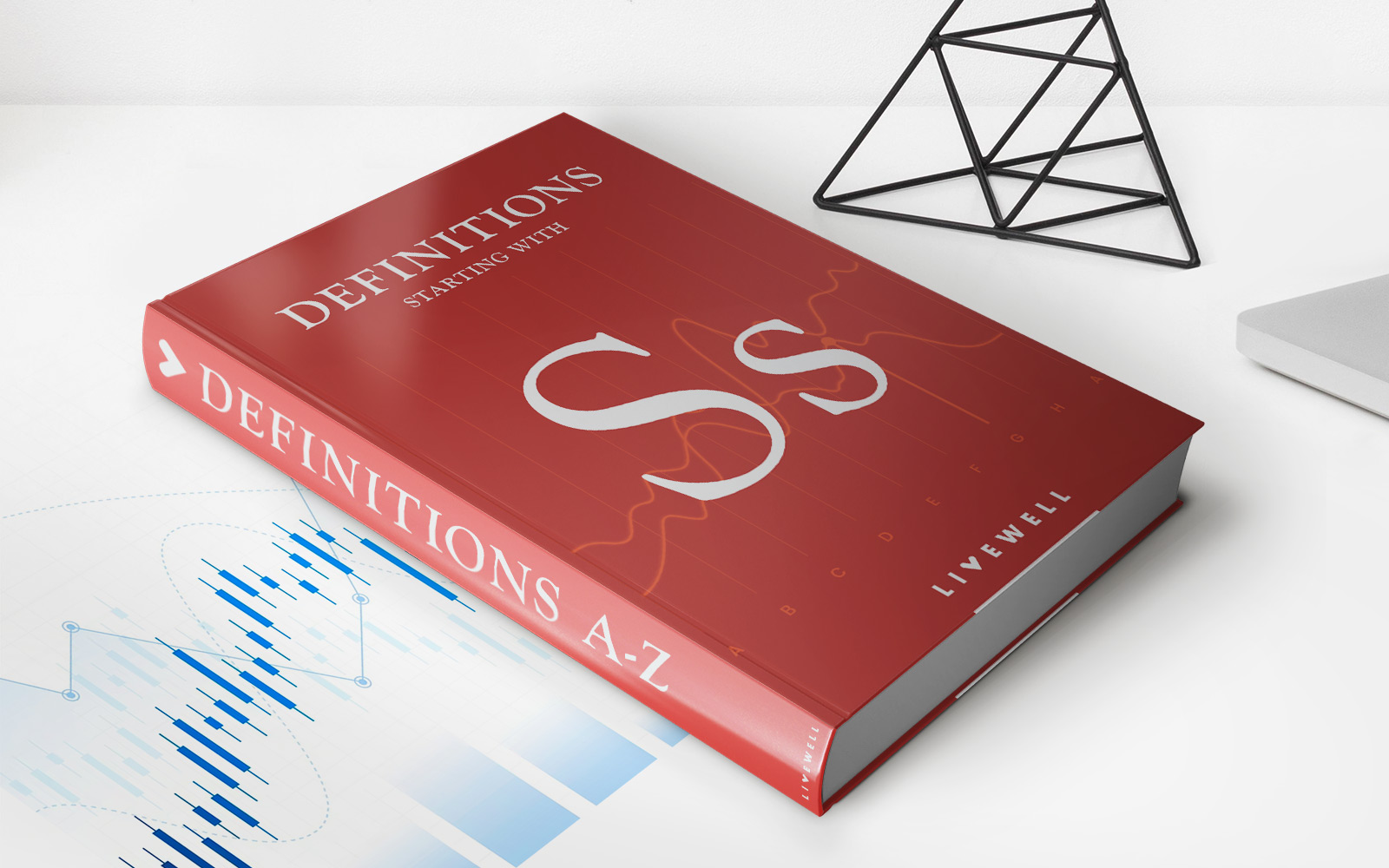

Finance
How Often Is Homeowners Insurance Paid
Published: November 22, 2023
Discover how often homeowners insurance is paid and get a better understanding of the finance aspect. Find out the payment frequency for your policy.
(Many of the links in this article redirect to a specific reviewed product. Your purchase of these products through affiliate links helps to generate commission for LiveWell, at no extra cost. Learn more)
Table of Contents
Introduction
Welcome to the world of homeowners insurance! Protecting your home is essential, and homeowners insurance offers the financial security and peace of mind you need. But have you ever wondered how often homeowners insurance is paid?
In this article, we will explore the different payment options available when it comes to homeowners insurance. Whether you are a new homeowner or considering switching insurance providers, understanding the various payment options will help you make an informed decision.
Homeowners insurance is designed to safeguard your home and its contents from unexpected events such as fire, theft, or natural disasters. It not only protects your property but can also provide liability coverage if someone is injured on your premises. Without homeowners insurance, you could be left with significant financial burdens in the event of a loss or accident.
With that in mind, let’s delve into the different payment options for homeowners insurance and explore the factors to consider when choosing a payment plan that suits your needs.
What is Homeowners Insurance?
Homeowners insurance is a type of property insurance that provides financial protection for your home and its contents. It is designed to cover the costs of repairing or replacing your dwelling and belongings in the event of damage or loss due to covered perils.
Typically, a standard homeowners insurance policy provides coverage for the physical structure of your home, such as the walls, roof, and foundation. It also includes coverage for personal property, including furniture, appliances, and electronics. Additionally, homeowners insurance offers liability coverage, which protects you if someone is injured on your property and you’re legally responsible.
It’s important to note that homeowners insurance policies vary in terms of coverage limits, deductibles, and exclusions. Commonly covered perils include fire, theft, vandalism, windstorms, and hail. However, damage caused by floods and earthquakes is typically not covered under a standard policy and requires separate coverage.
When you purchase homeowners insurance, you’ll need to determine the level of coverage you need based on factors such as the value of your home, the cost to rebuild, and the value of your belongings. It’s crucial to accurately estimate these values to ensure you have adequate coverage.
Now that you have a basic understanding of what homeowners insurance entails, let’s explore the various payment options available to you.
Different Payment Options for Homeowners Insurance
When it comes to paying for homeowners insurance, you have several options to choose from. The payment frequency can vary depending on your insurance provider and policy. Let’s take a closer look at the most common payment options available:
- Annual Payment Option: With the annual payment option, you pay for your homeowners insurance coverage in one lump sum for the entire year. This option typically offers the greatest convenience and may even come with a discount. However, it may require a larger upfront payment.
- Semi-Annual Payment Option: The semi-annual payment option allows you to make two payments per year. This can be a convenient choice if you prefer to split the cost into more manageable amounts. However, keep in mind that insurance providers may charge a small fee for this payment frequency.
- Quarterly Payment Option: With the quarterly payment option, you make four payments per year. This can be a suitable choice if you prefer smaller payments spread throughout the year. However, similar to the semi-annual option, some insurance providers may apply additional charges for this payment frequency.
- Monthly Payment Option: The monthly payment option allows you to pay for your homeowners insurance on a monthly basis. This can be the most affordable choice as it spreads the cost over twelve months. However, keep in mind that insurance companies may charge service fees or interest for this payment frequency.
It’s important to note that not all insurance providers may offer all payment options listed above. Some providers may only offer annual or monthly payment plans, while others may provide more flexibility. It’s a good idea to inquire about the available payment options when obtaining quotes and comparing insurance providers.
Now that you’re aware of the different payment options, let’s explore the factors you should consider when selecting the right payment plan for your homeowners insurance needs.
Annual Payment Option
The annual payment option for homeowners insurance allows you to pay for your coverage in one lump sum for the entire year. This payment frequency comes with its own set of advantages and considerations.
One of the main benefits of choosing the annual payment option is the convenience it offers. By paying for your insurance upfront, you don’t have to worry about making monthly or quarterly payments. This can save you time and effort in managing your insurance payments throughout the year.
Furthermore, insurance providers may offer discounts or incentives for choosing the annual payment option. These discounts can range from a percentage off the total premium to waived service fees. It’s worth checking with your insurance provider to see if they have any special offers for annual payments.
However, it’s important to consider the financial implications of the annual payment option. Since the entire premium is paid upfront, it can be a significant expense. Before opting for this payment frequency, make sure you have sufficient funds available to cover the cost without causing financial strain.
Additionally, keep in mind that choosing the annual payment option means committing to that insurance provider for the entire year. If you decide to switch insurance companies or adjust your coverage mid-year, you may not be eligible for a refund of the remaining premium. This lack of flexibility is an important factor to consider when deciding on the annual payment option.
In summary, the annual payment option offers convenience and potential discounts but requires a larger upfront payment. It’s a suitable choice for homeowners who prefer to handle their insurance payments all at once and have the financial means to do so.
Now let’s explore another payment option: the semi-annual payment option.
Semi-Annual Payment Option
The semi-annual payment option for homeowners insurance allows you to make two payments per year, typically every six months. This payment frequency offers a middle ground between the convenience of an annual payment and the flexibility of a more frequent payment schedule.
One of the main advantages of choosing the semi-annual payment option is the ability to spread out the cost of your insurance premiums. By making two payments instead of one lump sum, homeowners can find it easier to manage their budget and allocate funds for insurance expenses.
Another benefit is the potential for cost savings. Some insurance providers may offer a small discount for choosing the semi-annual payment option. While the discount may not be as significant as the one offered for an annual payment, it can still result in some savings over the course of the year.
However, it’s important to note that insurance providers may charge a small fee for the convenience of the semi-annual payment option. This fee is typically to cover administrative costs associated with processing multiple payments throughout the year. It’s wise to inquire about any additional charges or fees when discussing payment options with your insurance provider.
Similar to the annual payment option, the semi-annual payment option also requires a commitment for a specific duration. If you decide to switch insurance providers or adjust your coverage mid-year, you may not be eligible for a refund of the remaining premium. It’s essential to consider your insurance needs and evaluate the likelihood of needing to make changes before opting for the semi-annual payment option.
In summary, the semi-annual payment option offers the convenience of spreading out insurance payments while potentially providing cost savings. It’s a suitable choice for homeowners who prefer to make payments twice a year and have the financial means to do so.
Now let’s explore another payment option: the quarterly payment option.
Quarterly Payment Option
The quarterly payment option for homeowners insurance allows you to make four payments per year, typically spaced out every three months. This payment frequency offers more flexibility compared to annual or semi-annual options, but it also comes with some considerations.
One of the advantages of choosing the quarterly payment option is the ability to further divide the total premium into more manageable payments. This can be beneficial for homeowners who may find it challenging to pay a larger lump sum upfront or prefer smaller, more frequent payments. It allows for better budgeting and can make it easier to align insurance payments with other financial obligations.
However, it’s important to note that insurance providers often charge additional fees for the quarterly payment option. These fees cover the administrative costs associated with processing multiple payments throughout the year. You should inquire about any extra charges or fees when discussing payment options with your insurance provider to accurately assess the true cost of this payment frequency.
Furthermore, similar to the annual and semi-annual payment options, committing to the quarterly payment option means you are obliged to stay with the same insurance provider for the entire year. Switching insurance companies mid-year may result in loss of the remaining premium or adjustments to the payment schedule. Consider your insurance needs and the likelihood of making any changes before opting for the quarterly payment option.
It’s also important to have an organized system in place to keep track of your payments and ensure they are made on time. Late or missed payments can have consequences, including policy cancellation or late payment charges.
In summary, the quarterly payment option offers more flexibility in spreading out insurance payments, making it suitable for homeowners who prefer smaller, more frequent payments. However, it’s important to consider the additional fees associated with this payment frequency and ensure you have a system in place to manage your payments effectively.
Now let’s explore another payment option: the monthly payment option.
Monthly Payment Option
The monthly payment option for homeowners insurance allows you to pay for your coverage on a month-to-month basis. This payment frequency offers the most flexibility but comes with some important considerations.
One of the main advantages of choosing the monthly payment option is the ability to spread out the cost of your insurance premiums over twelve months. This can make it more affordable for homeowners on a tight budget, as the payments are smaller and more manageable.
Another benefit of the monthly payment option is that it offers the greatest flexibility. Unlike other payment frequencies, which often require a commitment for a specific period of time, the monthly payment option allows you to make changes to your coverage or switch insurance providers on a more frequent basis.
However, it’s important to note that this flexibility comes with some potential downsides. Insurance companies may charge service fees or interest for the monthly payment option. These additional costs can increase the overall price of your insurance coverage. It’s crucial to inquire about the specific fees and interest rates associated with the monthly payment option to determine if it is financially viable for you.
Additionally, paying on a monthly basis requires consistent monitoring and timely payments to avoid any lapses in coverage. Late or missed payments can result in policy cancellation or additional charges. It’s essential to have a reliable system in place to keep track of your payments and ensure they are made on time.
Lastly, it’s worth noting that some insurance providers may require you to set up automatic monthly payments through electronic funds transfer (EFT) or credit card authorization. This ensures that payments are made consistently on the due date. Be prepared to provide the necessary information and authorization if this is the case with your insurance provider.
In summary, the monthly payment option offers the most flexibility in terms of affordability and the ability to make changes more frequently. However, it’s important to consider any additional fees and interest associated with this payment frequency and to have a reliable system in place to manage your payments effectively.
Now that we’ve explored the different payment options for homeowners insurance, let’s discuss the factors you should consider when choosing the right payment plan for your needs.
Factors to Consider When Choosing a Payment Option
Choosing the right payment option for your homeowners insurance is an important decision that should be based on your personal circumstances and financial goals. Here are some key factors to consider when selecting a payment plan:
- Financial Situation: Take into account your financial situation and capabilities. Can you comfortably afford to make a larger lump sum payment upfront, or would it be more manageable to spread out the cost over smaller, more frequent payments? Assessing your budget and cash flow will help you make an informed decision.
- Discounts and Fees: Inquire about any discounts or fees associated with each payment option. Some providers may offer discounts for annual payments or charge extra fees for more frequent payment plans. Consider the potential cost savings or additional expenses associated with each option.
- Flexibility: Evaluate how important flexibility is to you. If you anticipate the need to make changes to your coverage or switch insurance providers during the year, options such as the monthly payment plan may offer more flexibility. However, keep in mind that flexibility may come with additional fees.
- Organization and Timeliness: Consider your ability to stay organized and make payments on time. Some payment options, such as monthly or quarterly payments, require consistent monitoring and punctual payments to prevent policy cancellation or additional charges. Assess your ability to manage and track payments effectively.
- Insurance Provider Policies: Familiarize yourself with the specific policies of your insurance provider. Understand the cancellation and refund policies in case you need to make changes mid-year. Some providers may offer more lenient policies, while others may have more strict guidelines.
Considering these factors will help you make an educated decision when choosing the right payment option for your homeowners insurance. Remember, it’s important to balance affordability, convenience, and your own financial goals.
Now that we’ve explored the different payment options and factors to consider, let’s recap what we’ve covered in this article.
Summary
Choosing the right payment option for your homeowners insurance is an important decision that depends on various factors. Understanding the different payment options and considering your financial situation, flexibility, discounts, fees, and organization is key to making the right choice.
Annual payments offer the convenience of paying for your coverage upfront, potentially with discounts, but require a larger upfront payment. Semi-annual payments allow for spreading out the cost of insurance premiums over two payments, while quarterly payments provide even more flexibility with four payments throughout the year. Monthly payments offer the greatest flexibility but may come with additional fees and potential interest charges.
Consider your financial capabilities, budget, and the level of flexibility you need. Take into account any discounts or fees associated with each payment option, as well as your ability to stay organized and make payments on time. Review the policies of your insurance provider regarding cancellations and refunds to understand their guidelines.
Ultimately, the right payment option for your homeowners insurance will depend on your individual circumstances and preferences. Choose a payment plan that aligns with your financial goals and offers you peace of mind in protecting your home and belongings.
By understanding your options and considering these factors, you can make an informed decision and confidently select the payment option that works best for you.
Thank you for reading this article on the different payment options for homeowners insurance!














